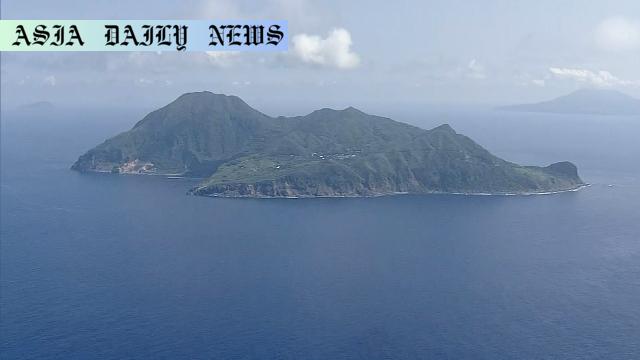Earthquakes persist in the Tokara island chain, recording nearly 2,200 tremors perceptible to residents over the last month.
- Seismic activity surged in Japan’s Tokara island chain, recording 2,196 powerful tremors in a month.
- A major quake on July 3 reached an intensity of lower 6, with other significant intensities recorded on Akusekijima and Kodakarajima islands.
- The Japan Meteorological Agency advises caution for potential quakes reaching lower 6 intensity levels.

Introduction
The southwestern Tokara island chain in Japan has been experiencing a prolonged and significant period of seismic activity since June 21, 2023. Over the past month, nearly 2,200 quakes have been recorded, many of which were strong enough to be perceptible by residents. Local authorities and the Japan Meteorological Agency (JMA) are urging caution as the area remains at risk for further seismic events with intensities potentially reaching lower 6 on the Japanese seismic scale.
Unprecedented Swarm of Earthquakes
The recent uptick in seismic activity in the Tokara islands, particularly around Akusekijima and Kodakarajima islands, marks one of the largest events of its kind in terms of frequency. Since June 21, 2023, continuous minor and major tremors have been recorded. Notably, Akusekijima experienced a powerful earthquake measuring lower 6 on the Japanese intensity scale on July 3, along with three quakes each at upper 5 and lower 5 intensities. Kodakarajima has similarly endured significant seismic disruptions, with a quake of lower 5 intensity on record. This escalation of activity is unusual, even for a region accustomed to tectonic movements.
Past Seismic Activity in Tokara
Tectonic activity is not new to Tokara; the island chain has previously endured earthquake swarms in 2021 and earlier in 2023. However, the current swarm is far larger in scale and intensity compared to prior events. Despite advances in geological monitoring, the sheer volume and frequency of tremors have posed challenges for scientists and local administrations striving to assess potential risks. The region’s unique geological features, including multiple tectonic plate boundaries, add complexity to understanding the root causes of this phenomenon.
Preparedness and Warnings
The Japan Meteorological Agency has issued multiple warnings to residents, advising them to remain vigilant. They have assessed that tremors with intensities of up to lower 6 could occur again in the near future. Residents of Akusekijima and Kodakarajima have been encouraged to adopt safety measures and prepare for potential emergencies, such as having evacuation plans and emergency kits ready. Authorities are closely monitoring seismic activity and conducting drills to mitigate potential disaster impacts.
Impact on Residents and Infrastructure
While no reports of major infrastructural damage or casualties have emerged, the continuous tremors have disrupted daily life for the Tokara residents. Frequent minor quakes, combined with larger shocks, have created a persistent atmosphere of uncertainty. Locals have expressed concerns over potential landslides or tsunamis that might be triggered by a significant seismic event. Emergency agencies are addressing these fears by conducting inspections of critical infrastructure and providing real-time earthquake updates to the community.
Global Implications of Seismic Swarms
The surge in seismic activity on the Tokara island chain aligns with global patterns of increased geological activity in tectonic hotspots. Scientists believe that studying the Tokara seismic swarm could provide invaluable data on earthquake prediction and early warning systems. The event also underscores the importance of international cooperation and knowledge-sharing among geologists and disaster management organizations to better understand and mitigate risks from tectonic activities globally.
Conclusion
The Tokara island chain’s month-long seismic swarm has highlighted both the resilience of local communities and the ever-present challenges posed by living in tectonically active regions. By closely monitoring seismic patterns and maintaining robust disaster-preparedness strategies, the residents and authorities of Tokara hope to minimize potential risks and foster long-term safety and stability. As researchers continue to analyze this episode, their findings may contribute to advances in earthquake science and preparedness on a global scale.



Commentary
The Significance of Monitoring Seismic Swarms
The recent seismic activity experienced by the Tokara island chain is a reminder of Earth’s dynamic nature and the constant need to monitor tectonic movements. The ability to predict and prepare for earthquakes is critical, especially for regions like Tokara that are situated in areas of high seismic activity. This event not only underscores the importance of local preparedness but also highlights the essential role of science and technology in minimizing the impact of natural disasters.
Emotional and Physical Impact on Communities
Living through a month of ongoing tremors undoubtedly takes a toll on the emotional and physical wellbeing of residents. The persistent threat of a large quake can disrupt daily routines, instill fear, and hamper economic activities. It is crucial for local authorities to provide continuous support to residents, offering mental health resources and ensuring clear communication about what steps are being taken to safeguard the community.
Advancing Earthquake Science
This seismic swarm provides an invaluable opportunity for researchers to delve deeper into understanding earthquake patterns. By analyzing the data collected from the nearly 2,200 quakes, experts could uncover critical insights into predicting such phenomena with greater accuracy. The global scientific community benefits from these findings, as they contribute to the broader field of earthquake science and early warning systems.
Resilience and Preparedness
Lastly, the resilience of Tokara residents serves as an inspiring example of how preparedness and community solidarity can mitigate the impact of natural disasters. By investing in infrastructure and emphasizing education about seismic risks, communities worldwide can improve their disaster readiness and response capabilities.